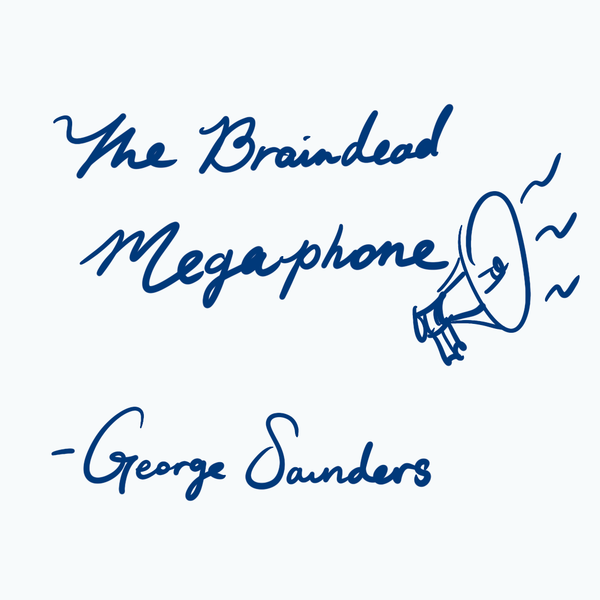Many nonfiction writers use "I" constantly without thinking about it, assuming it makes their writing more personal and authentic.
Others avoid the personal pronoun altogether, remembering a bogus writing rule that was picked up in their grammar school class.
But what many writers overlook, I think, is the thing that "I" refers to—who is that?
There's a huge difference between saying, "In this paper I argue that writers should use personal pronouns" and "I couldn't put the essay down, it was that good!"—one announces what your essay is doing; the introduces a character, and pulls readers in to your world.
In this issue of Essay Club, we'll look at an essay by George Saunders that does something interesting with personal pronouns, and understanding it will give you (like, who is that?) control over how present you and your readers feel in your writing.
Use Your Pronouns! They Build Character
So back to these two uses of "I":
- "In this paper I argue that writers should use personal pronouns"
- "I couldn't put the essay down, it was that good!"
That difference in usage has a name. The first is what Eric Hayot calls the "author-function" of the paper. It's a rhetorical device, a piece of metadiscourse, that points out one of the major functions of the essay.
The second one is a more embodied, personal use of the first person pronoun.
The author-function "I" is thin and impersonal. When you write "In this essay I argue," the pronoun merely signals the essay's purpose; it doesn't bring you, the flesh-and-blood writer, into the picture. It's a structural marker, not a character.
But when we read something like "I don't know why the essay is so short," a character appears. We're given the sense of a real person with limitations and uncertainties.
Same pronoun. Two vastly different functions.
And that difference, according to Hayot, determines "how much you, or the reader, or some 'we' that includes both of you, becomes a character in your work."
The Braindead Megaphone
George Saunders's essay "The Braindead Megaphone" does fascinating things with the pronoun "I."
The essay—published at a time when mainstream media was saturated with images both grave and braindead: the Iraq War, Paris Hilton, Anna Nicole Smith—critiques contemporary media culture through an extended metaphor:
imagine a party where intelligent conversation is drowned out by a guy with a megaphone shouting simplistic nonsense.
This "Megaphone Guy," Saunders argues (the person? or the author-function?), represents profit-driven mass media that coarsens public discourse and diminishes our collective imagination—ultimately contributing to disasters like the Iraq War, which he calls "a literary failure, by which I mean a failure of imagination."
But as you read, pay attention to how Saunders positions himself within this critique.
